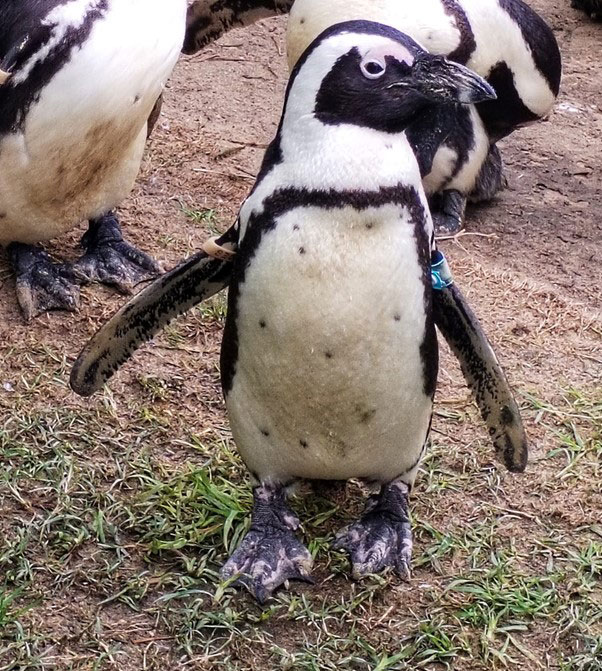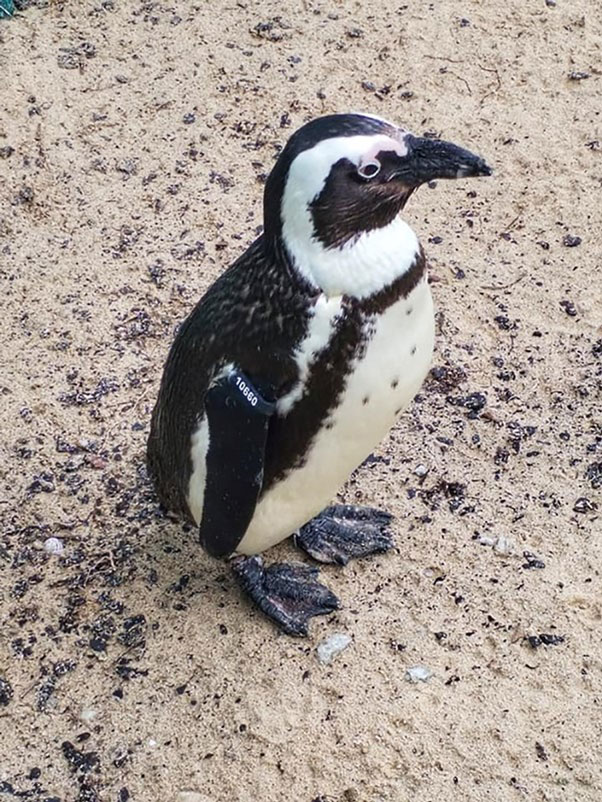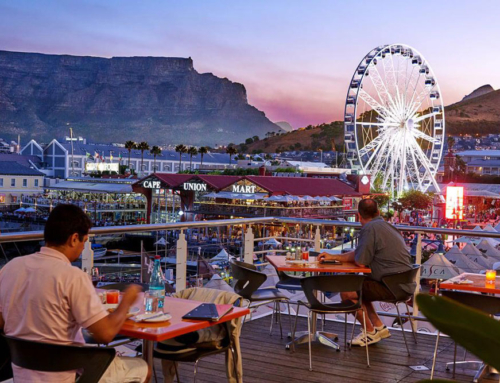Article: Ubi Stohr
The African Penguin is a unique penguin found in parts of the Eastern Cape, Western, Northern Cape and Namibian Coastline.
These medium sized penguins are on a vulnerable status. Many visitors to Cape Town enjoy seeing these amazing birds in their amazing suites. Boulders Beach is a popular stop on the Cape Peninsula Tour, or Stony point whilst discovering the Whale Coast.
These birds are the only permanent penguin species in South Africa. Although breeding occurs throughout the year, in Namibia the birds breed peak time in the late spring to early summer months (Nov-Dec) but in South Africa peak is March into May.
They are monogamous in nature, yet a loss of a partner could cause them to seek another partner. One to two eggs are laid with an incubation period of up to 41 days. The eggs hatch 2 day apart, this is called asynchronous hatching. It takes 15 days of constant nesting, both parents responsible till the hatchlings can regulate their own body temperature.
Once the chick reaches 30 days the chicks will often be left unguarded. During this period, they can form large groups also known as creches. Up to 3 months the chicks become independent. Till three months chicks are hugely dependant on their parents who will regurgitate their food into their beaks.

Photo: Ubi Stohr
Hatchlings are generally grey in colour and will moult into a bluish colour with Stained white front once they reach the 80-day mark. While in chick phase they moult twice, with the first moult on the 14-day mark and the second closing in on the 60-day mark.
At 90 days they are fully fledged disappearing out to sea, returning to the breeding colony after 12 months to almost 2 years to moult. They then moult into adult plumage.
Reproduction maturity differs from bird to bird however in can be as early as 4 years or as much as 6 years. Penguins moult quicky and is to ensure they stay waterproofed and warm against the cold. They will fatten up before mail moult as they cannot swim during moult as they battle to regulate body heat and obviously lose their weatherproof. When feeding during the pre-moult phase they can gain up to 31 % of their regular body weight. So, for 18 days they are unable to feed during moult. After mould penguins will feed excessively to gain 41% of their body weight again before their breeding time.
Penguins are vulnerable to many things, man being the biggest enemy. Over a period, penguins have started making nests from various materials, this is due to guano being exploited for commercial uses. This would have been the primary nesting material. Fishing nets and line entanglement is another problem as well as oil slicks and spillage from ships. In nature they are vulnerable to predation, sharks may take a nibble and on land eggs are taken by kelp gulls, mongoose as Common Snake Eaters, domestic dogs and cats.
Penguins can overcome heat, by spending a large amount of time in the ocean or facing with their faces, flippers and feet away from the sun. The pink area above their eye also playing vital role in temperature regulation, pumping full of blood when it gets hot, cooling the blood with the air outside.

Photo: Ubi Stohr
Another unique feature to penguins is the desalination gland or supraorbital gland. Due to penguins not having much accessibility to fresh water they take in a fair amount of salt. The salt basically being absorbed by this gland found above the eye. The gland surrounds the capillary bed which constantly strains the salt water that is taken in. The salt is excreted by the duct. in the beak in a brine like form. So, the gland and capillaries act like a filter with the salt content being up to 5 times more than that of the rest of the body.
Status of these birds are worrying with populations decreasing from over 55000 in 1979 to less than 10 000. The stress of human development decreasing shore based habitats and the exploitation (hunting and guano harvesting) has no doubt played a crucial blow to populations. The biggest problem as with any other species is the genetic diversity or variation decrease as the population decreases.
Join our Cape Peninsula Tour to see these wonderful birds up close at Boulders Beach. Contact us today for a quote.



